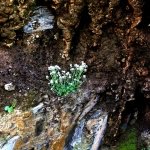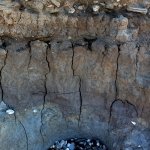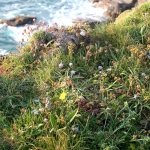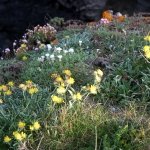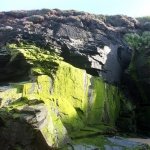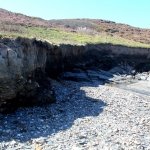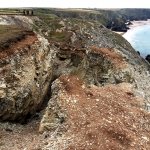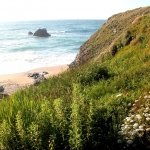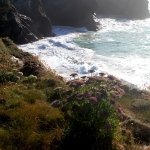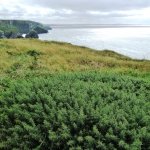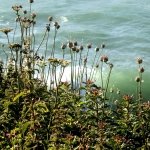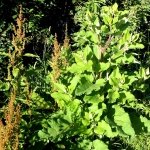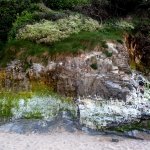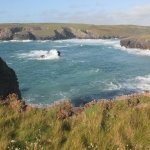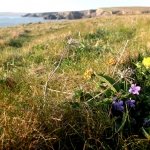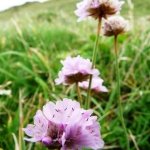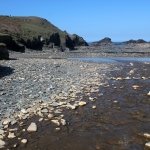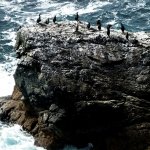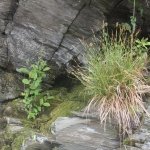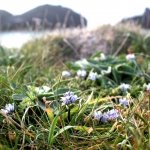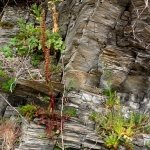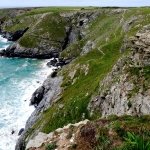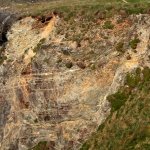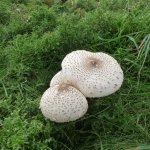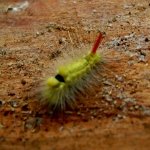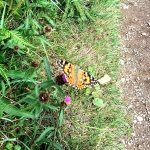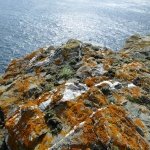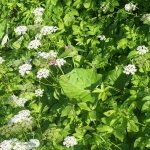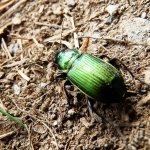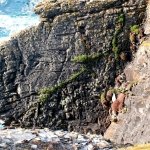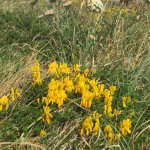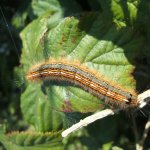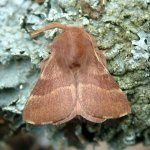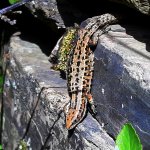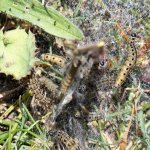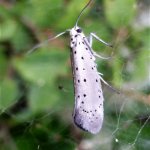Moths on Porthcothan cliffs
Lackey moth
Every year, as regular as clockwork, on the scrub of the Porthcothan cliffs, the Lackey moth’s caterpillars hatch from eggs laid on blackthorn twigs by the adult moth the previous summer.
From April into May, they secrete a kind of gossamer that creates a protective larval web, that is quite tight and opaque. The caterpillars feed on the leaves of the blackthorn, stripping the twigs bare, first within the web, then outside it.
The caterpillars are distinguished by their colourful, longitudinal stripes and fine, golden hairs. After pupation, the adult moth, emerges to complete the cycle between July and August. As with just about all lepidoptera, the adult moth looks nothing like its larval stage. It is a furry, ginger colour.
Although relatively abundant locally, the Lackey is largely confined to the southern half of Britain and is a BAP (Biodiversity Action Plan) species. In every sense, it is quite special!
Orchard Ermine moth
Anyone walking the coast path down into Porthcothan Bay from the north this year in late May, cannot fail to notice one of nature’s occasional spectacular shows. Spread across large swathes of blackthorn are sheets of white gossamer. Unlike the tight, opaque larval web of the Lackey, these shimmering webs are transparent, and are made by the caterpillars of the Orchard Ermine moth.
The caterpillar is quite different from the Lackey, too. The segmented body is hairless, with a pair of black spots on each segment. You might see the caterpillars congregate, hanging motionless in their web, about to pupate. The yellowish pupae are suspended inside the web.
The adult – about 10mm long – emerges from its pupa in June in Porthcothan, although in the rest of the British Isles, July to August is the usual flight period. When you see this tiny day-flying moth, pure white, with black spots, you realise why it earned the name, Ermine.
Unlike the annual appearance of the Lackey moth caterpillars, the Orchard Ermine population explosion seems to happen every two to four years.
Tristram Besterman
Trebears
Porthcothan
CLIFF
Cliffs have inaccessible vertical faces which are safe for birds to make their nests, seabirds such as herring gulls and shags, also ravens, peregrine falcons and kestrels, and rock doves. Plants include rock and golden samphire, scurvy grass and thrift which grow in crevices. Some of this grassland has never been ploughed so along the cliff top there is wild thyme in grass kept short by the wind and rabbits, also ant hills which provide food for choughs and nectar for blue butterflies. Thyme grows on the ant hills and attracts the blue butterflies, which lay eggs there. Skylarks nest in the grassland between and corn buntings nest nearby in cultivated fields.
Cliff food chains:


